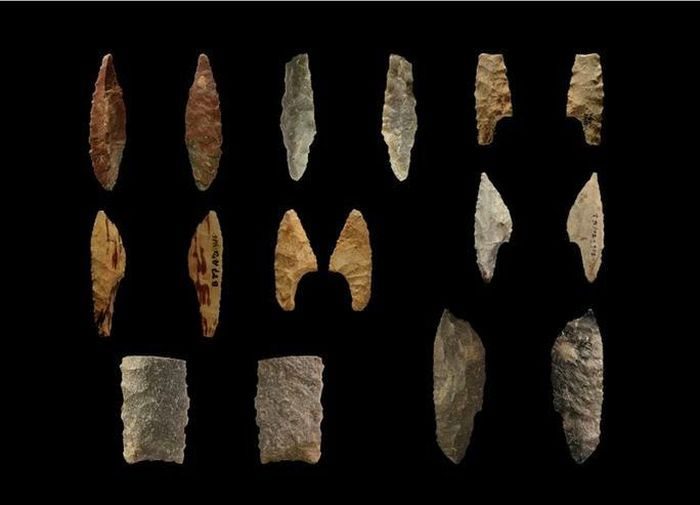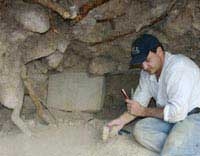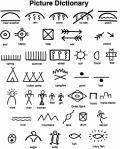A seemingly modern convenience has unexpectedly emerged from the excavation of a Stone Age site in Spain, revealing a series of archaeological treasures.
According to Heritage Daily, at the El Buxu Cave in the Principality of Asturias, Spain, archaeologists discovered a significant treasure trove consisting of numerous valuable artifacts dating back up to 20,000 years.
These include drawings depicting animals such as horses and deer, as well as “designs” that could represent ancient hunting traps, along with an array of distinctive tools made from quartz and flint.
Preliminary studies suggest that the cave served as a base for humans during the Upper Paleolithic hunting season when the area was teeming with deer, goats, and ibex…

Spear points in the prehistoric cave of Spain with adhesive – (Photo: UNED).
However, the most shocking discovery among this archaeological treasure is evidence of the use of… adhesive, which humanity believed to be an invention of a later age, at least from the time humans developed civilizations to a certain level.
Clear evidence on the spear points indicates that prehistoric people residing in what is now Spain used adhesive to attach stone spearheads to their shafts before reinforcing them with other materials.
The research team, led by Professor Francisco Javier Munoz from the National University of Distance Education (UNED) in Spain, employed infrared microscopy to examine and demonstrate that hunters 20,000 years ago created their own durable adhesive by mixing pine resin and beeswax.
This adhesive was found on the backs of the spear points.
“Pine resin is a very durable adhesive but becomes quite brittle upon impact, which is why it was mixed with beeswax to create a much more elastic bonding agent,” Professor Munoz stated.
This discovery indicates that many factors contributing to human civilization—which only exploded in the last few millennia—have much older origins, including various technologies for daily life derived from Stone Age tribes, and even from other human species that went extinct tens of thousands of years ago.
The study has just been published in The Journal of Archaeology Science: Reports.





















































